Table of Contents
Q1. a, b, c and d are four consecutive even numbers, if the sum of ‘a’ and ‘c’ is 120, what is the product of ‘b’ and ‘d’?
(a) 4030
(b) 3780
(c) 3900
(d) 3900
(e) 3840
Q2. Three numbers are given. The average of first and third numbers is 24 more than that of average of second and third numbers. Find out the difference between the first and second numbers.
(a) 36
(b) 40
(c) 42
(d) 48
(e) 46
Q3. In an election between P and Q , if 2/5th of the total voters promised to vote for P and rest promised to vote for Q. On the voting day 25% of the voters went back on their promise to vote for P & 30% of the voters went back on their promise to vote for Q. Find the total no. of voters, if Q wins by 400 votes.
(a) 8000
(b) 10000
(c) 15000
(d) 5000
(e) 12000
Q4. The sum of digits of a two-digit number is 12 and the difference between the two-digits of the two-digit number is 6. What is the two-digit number?
(a) 39
(b) 28
(c) 93
(d) 75
(e) Either (a) or (c)
Q5. 2/3rd of first number is equal to the cube of the second number. If the second number is equal to 12% of 100, what is sum of the first & 2nd number?
(a) 2408
(b) 2640
(c) 2426
(d) 2604
(e) 2804
Q6. If income & saving ratio of a person is 25 : 9. If saving increases 1/3rd & expenditure increases by 25% & income increases by Rs. 2100. Then find the initial saving?
(a) Rs. 3200
(b) Rs. 3500
(c) Rs. 5600
(d) Rs. 2700
(e) Rs. 4200
Q7. Sum of four consecutive even numbers is 49 more than sum of three consecutive odd numbers and the sum of lowest odd and lowest even number is 23. Find the largest even number.
(a) 28
(b) 36
(c) 18
(d) 32
(e) 22
Q8. Average age of a class of 15 student is 18 years. After admission of 5 new student average age of class decreases by 0.25. Find the average age of the 5 new students.
(a) 16.5
(b) 17
(c) 17.25
(d) 17.5
(e) 17.75

Q10. Neeraj save 40% out of his total salary of Rs. 8000 and remaining spends on expenses. If his expenses increased by 25% then how much percentage increase in his salary should be done to keep the saving amount same as before.
(a) 12.5%
(b) 15%
(c) 17.5%
(d) 20%
(e) 25%
Q11. The population of a town is 4320. The ratio between men and women is 4 : 5. If there are 60% literate among men and 50% literate among women. then the total number of illiterate men is what percent of the total number of literate women in town?
(a) 36%
(b) 64%
(c) 72%
(d) 78%
(e) 56%
Q12. Government levied two types of taxes at 12% and 18% rates. Sakshi must pay Rs.264 as total tax. If she has Rs.1800 then amount on which govt. levies 18% tax is what percent less than the amount on which govt. levies 12% tax?
(a) 20%
(b) 25%
(c) 30%
(d) 35%
(e) 40%
Q13. Sonakshi spends 20% of her monthly salary on food. Out of remaining salary she spends 30% on rent, 50% on furniture. Find the amount Sonakshi spends on food and rent together if her annual salary is 4,20,000 ?
(a) 21,000
(b) 12,600
(c) 17,500
(d) 15,400
(e) 9,100
Q14. Find the least number which being divided by 9, 12, 16 and 30 leaves remainder ‘3’ in each case.
(a) 723
(b) 720
(c) 623
(d) 147
(e) 620
Q15. Average of three numbers is 44. If ratio of smallest number to largest number is 8 : 15 while the sum of smallest and second smallest number is 72, find the difference between second smallest number and smallest number ?
(a) 2
(b) 4
(c) 6
(d) 8
(e) 10
Practice More Questions of Quantitative Aptitude for Competitive Exams:
Solutions
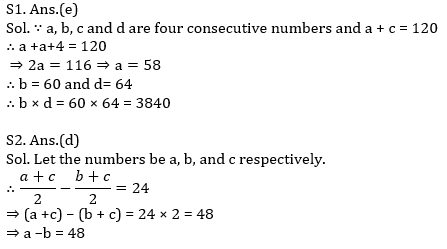
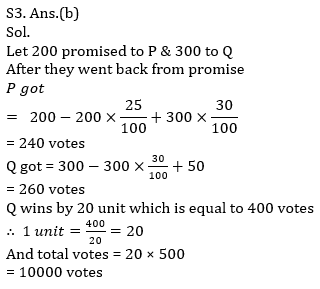
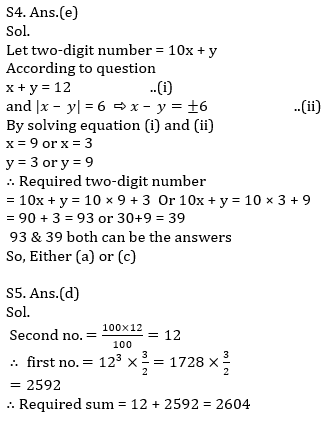
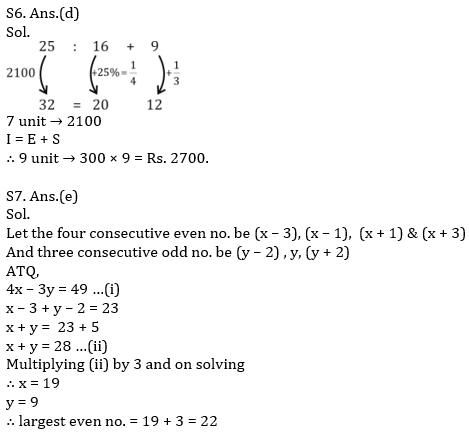
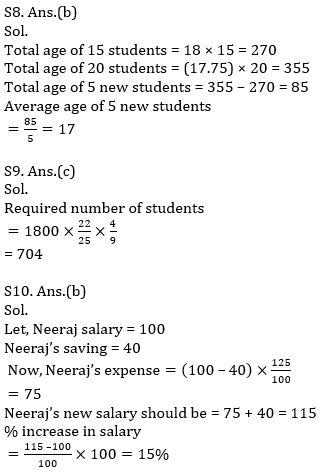
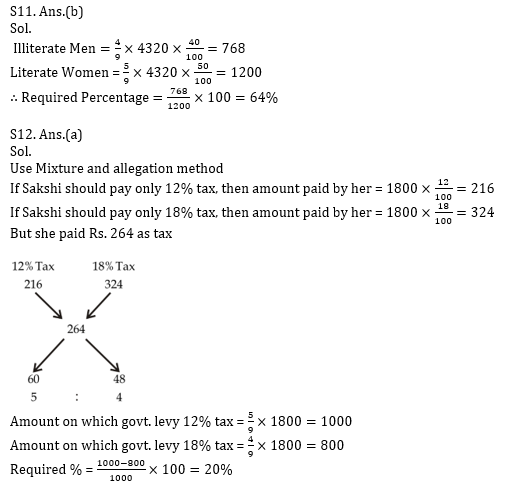


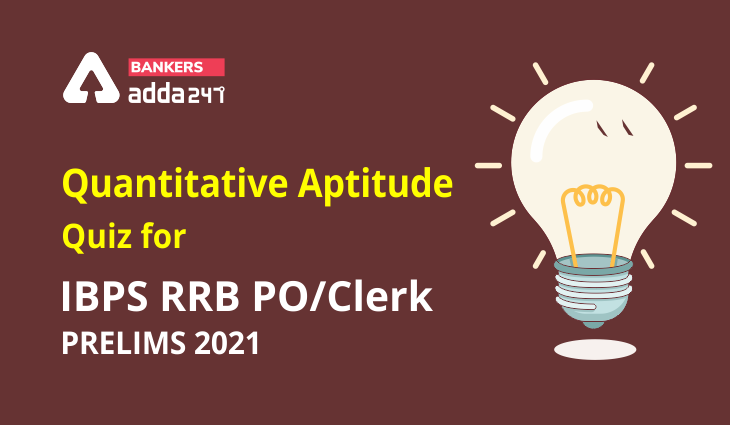



 GA Capsule for SBI Clerk Mains 2025, Dow...
GA Capsule for SBI Clerk Mains 2025, Dow...
 The Hindu Review October 2022: Download ...
The Hindu Review October 2022: Download ...
 ECGC PO Scorecard 2025 Out, Check Marks
ECGC PO Scorecard 2025 Out, Check Marks




